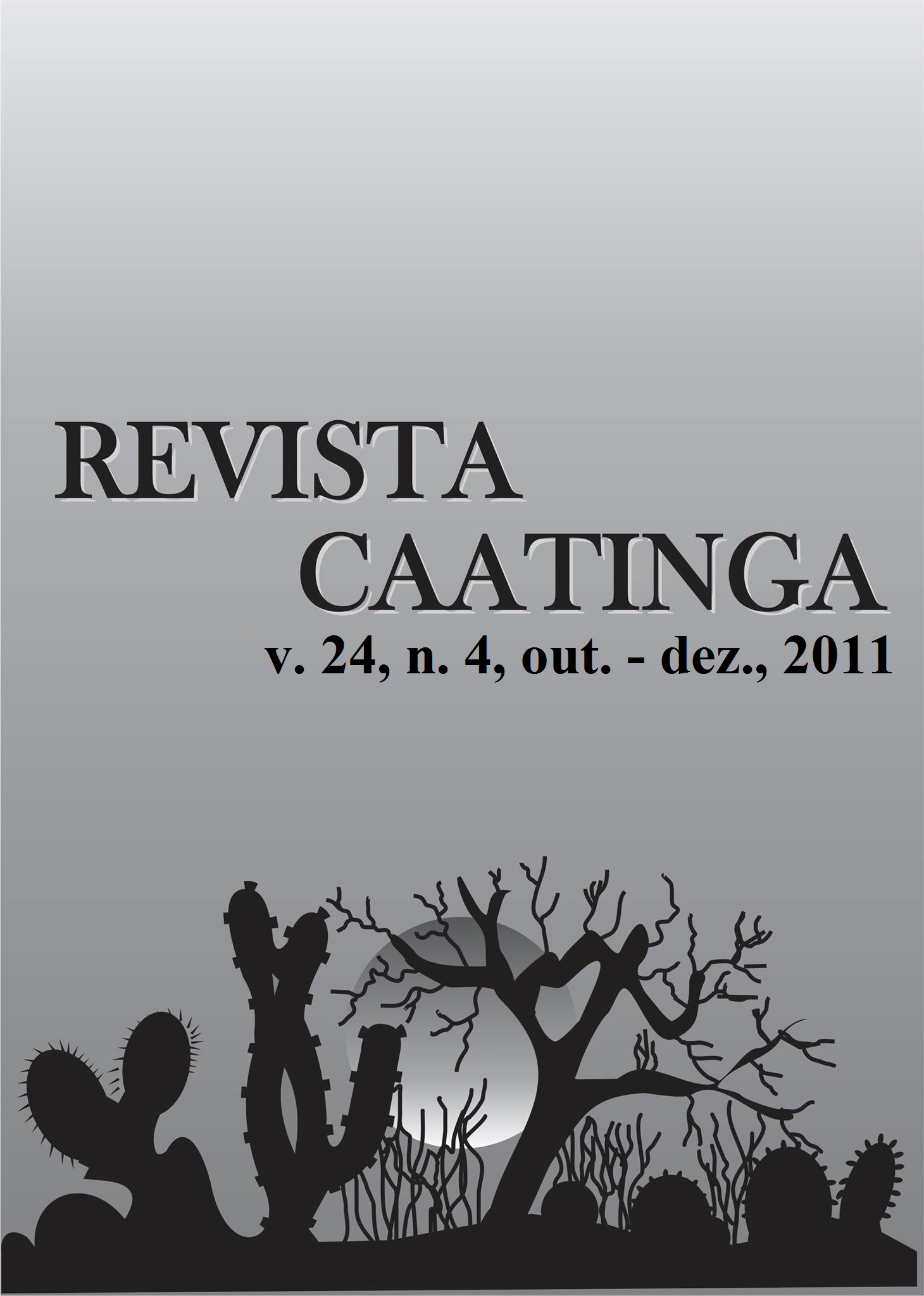IDENTIFICATION OF GROUNDWATER QUALITY SIMILARITY USING MULTIVARIABLE ANALYSIS
Palavras-chave:
Cluster analysis. Water salinity. Dissimilarity. Water quality.Resumo
Identification of groundwater quality similarities may help to reduce the number of monitoring stations required in water bodies. This research was carried out to identify groundwater quality similarity using a multivariate statistical technique called cluster analysis in the Baixo Acaraú Irrigation District (DIBAU) in Ceará, Brazil. Ten shallow wells randomly located in the DIBAU were regularly monitored for a period of 27 months (Dec/2003-Nov/2005, Nov/2006, Mar and Apr/2007). Samples were analyzed for pH, Ca2+, Mg2+, Na+, K+, Cl-, CO32-, HCO3-, SO42-, PO43-, NH4+, NO3-, electric conductivity (EC) and sodium adsorption ratio (SAR). Descriptive statistics, hierarchal cluster analysis, and the t-test (1%) were evaluated using SPSS 16.0. The water in all but two wells was classified as acidic, and the average pH was lower than five. Phosphorus concentrations were always above the recommended limit for human consumption (0.1 mg L-1). Moreover, the results show that the groundwater quality was used to define four clusters that were independent of the geographic position of the wells. EC values, sodium and chloride concentrations in the water samples distinguished two wells (P1 and P7) from the others, and pH, Mg2+ and SAR distinguished these two wells, one from the other.Downloads
Downloads
Publicado
Edição
Seção
Licença
Os Autores que publicam na Revista Caatinga concordam com os seguintes termos:
a) Os Autores mantêm os direitos autorais e concedem à revista o direito de primeira publicação, com o trabalho simultaneamente licenciado sob a Licença Creative Commons do tipo atribuição CC-BY, para todo o conteúdo do periódico, exceto onde estiver identificado, que permite o compartilhamento do trabalho com reconhecimento da autoria e publicação inicial nesta revista, sem fins comerciais.
b) Os Autores têm autorização para distribuição não-exclusiva da versão do trabalho publicada nesta revista (ex.: publicar em repositório institucional ou como capítulo de livro), com reconhecimento de autoria e publicação inicial nesta revista.
c) Os Autores têm permissão e são estimulados a publicar e distribuir seu trabalho online (ex.: em repositórios institucionais ou na sua página pessoal) a qualquer ponto antes ou durante o processo editorial, já que isso pode gerar alterações produtivas, bem como aumentar o impacto e a citação do trabalho publicado (Veja O Efeito do Acesso Livre).







